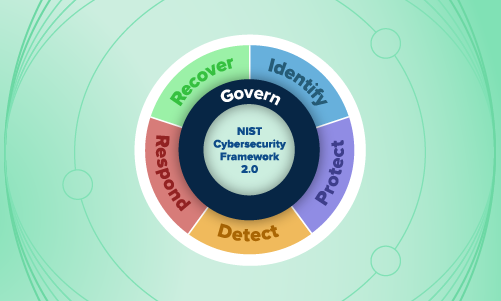Security operations · 2 MIN READ · DAN WHALEN · JAN 26, 2023 · TAGS: Cloud security
Let’s start with some numbers:
- The container application market is expected to grow to $12 billion by 2028 (a compound annual growth rate [CAGR]) of >33%. Kubernetes (k8s) will drive a majority of the expansion.
- The container and Kubernetes security market projects to grow to $8.2B by 2030 (27.4% CAGR from 2021-2030).
- 96% of respondents to a 2021 Cloud Native Computing Foundation (CNCF) survey reported using or evaluating k8s.
- A RedHat survey found that 85% of IT leaders consider Kubernetes to be important or extremely important for their business.
In other words, Kubernetes is exploding (in a good way). And for important reasons. It saves money. It improves DevOps efficiency. Workloads can be deployed in multi-cloud environments. It affords more portability and minimizes vendor lock-in. K8s schedules and automates container deployment across multiple compute nodes. It promotes app stability and availability in the cloud. And it’s fully open-source.
As is the case for many (most? all?) new technologies, though, Kubernetes faces growing pains. That same RedHat report noted that 55% of DevOps, engineering and security teams had delayed applications because of security concerns and 93% experienced at least one security incident in their k8s environments in the last year.
Top Kubernetes pain points
Our customers have walked us through a number of issues they encounter, and three stand out.
1: Lack of coverage for Kubernetes environment. K8s applications are increasingly popular with application developers, but SecOps teams need coverage for every app, endpoint, network, and more – a huge requirement. With the rapid adoption of container applications through Kubernetes, these businesses now have a significant number of workload applications that aren’t proactively monitored – if they’re monitored at all.
2: Security as a business inhibitor versus enabler. No, this one isn’t unique to k8s – the war between business and security seems old as time. And the basic dynamics make sense. Organizations want to innovate, move fast, and grow. Security teams want to prevent Bad Things® from happening. Unfortunately, when cybersecurity is perceived as a drag on the business, the business often counters by circumventing security – which brings us back to Bad Things®.
In the case of Kubernetes, developers are deploying container apps and security isn’t monitoring them. When security isn’t integrated from the start, the entire business is exposed to significant risk.
3. Growing attack surface with limited security expertise. Another not-new problem made worse by k8s: hiring and retaining talent, something that has plagued the cybersecurity industry for a long time. The 2022 (ISC)2 Cybersecurity Workforce Study, released last October, found a global shortage of 3.4 million workers in the field – roughly equivalent to the population of Utah. With Kubernetes, the talent pool is even slimmer. 48% of respondents in a 2022 survey said the “lack of in-house skills and limited manpower [is] the biggest obstacle to migrating to or using Kubernetes and containers…”
So, security operations teams are underwater. They lack the time and resources to become experts on every new attack vector. Innovation and business demands associated with a hot new technology intensify the pressure, inducing a reactive approach to everything, weakened effectiveness across the board, fatigue, burnout, and mounting risk levels.
Did we miss anything?
Stay tuned to this space. We have some more useful analysis of the Kubernetes market, its benefits and challenges, and maybe even some ideas to help you better implement and manage your own strategy in the coming weeks.
In the meantime, drop us a line with any questions.






